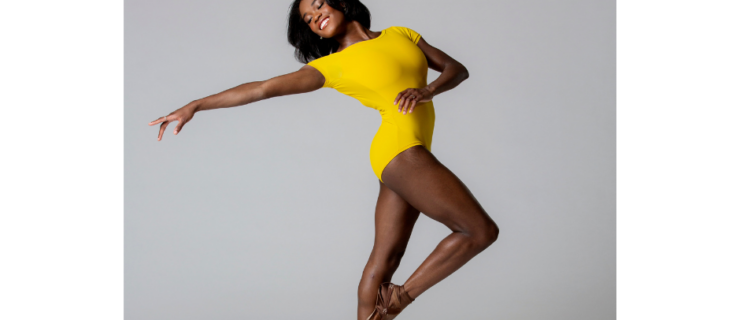Four Dancers of Color Share Their Experiences at the Intersection of Dance and Identity
Reconciling one’s dance and racial identities can be a complicated, emotional process, especially since the dance world is so slow to embrace change. But as the overdue push for diversity in dance becomes stronger, many dancers are embracing their racial and ethnic backgrounds in ways that were previously frowned upon—from wearing tights that match their skin color to rocking natural hair onstage. Dance Spirit spoke with four dancers of color about their experiences.

Erin Baiano
Hannahlei Cabanilla
Growing up in Orange County, CA, Hannahlei Cabanilla was immersed in a predominantly white environment. But her parents—who immigrated to the U.S. from the Philippines before she was born—made sure to share Filipino culture with their daughter. “They told me stories about how they grew up,” she says. “We celebrate the Filipino culture together, we go to church together—it’s a big part of my life.”
As she got older, Cabanilla noticed the racial disparities between herself and the other students. She wondered how she, a first-generation woman of color, could carve out her spot in contemporary dance. After winning Season 15 of “So You Think You Can Dance,” Cabanilla wanted to use her platform to help young dancers realize that they, too, can have a place in the industry, regardless of race or ethnicity. “When I was a kid, seeing people like Vanessa Hudgens and Melody Lacayanga—people who looked like me—making it big was so inspiring,” she says. “I want to show the younger generation that anyone of any color, any size, and any shape can achieve their goals and dreams if they work for it.”

Erica Lall with Patrick Frenette in American Ballet Theatre’s Swan Lake (Gene Schiavone, courtesy ABT)
Erica Lall
American Ballet Theatre corps member Erica Lall, who identifies as mixed race, grew up in the suburbs of Houston, TX. Surrounded by mostly white dancers, she didn’t realize how racist some of their comments were until she got older. “I didn’t even know that these comments were an attack on my skin color at the time,” she remembers. “I’d hear things like ‘Oh, the dark one’ or ‘She’s only getting this because she is a person of color.’ ”
Lall, who moved to NYC at age 15 to study at American Ballet Theatre’s Jacqueline Kennedy Onassis School, explains that one of the biggest stereotypes black dancers face is regarding body type. “People think that every black dancer has a big butt, boobs, and hips, with thick muscles. We don’t all look like that—there’s not one type of black dancer,” she says.
Another issue was hairstyles. “From age 7 until last year, I had my hair relaxed so that I could look like the other white dancers with perfectly slicked-back hair,” she says. “But there’s nothing wrong with my natural hair.”
Lall urges young dancers of color to embrace their identities, and recognize there’s enormous power in what makes them different. “If I see a dancer of color at JKO,” she says, “I immediately approach them to let them know they’re welcome, because it’s easy to feel out of place when you’re the only one.”

Steven Vandervelden/Vandy Photography, courtesy Veiga
Dandara Veiga
As a child in Brazil, Dandara Veiga’s artistry was greatly informed by her parents, who taught Afro-Brazilian dance and Capoeira—but they discouraged her from learning classical ballet or contemporary dance styles, acutely aware of the criticism she’d face as an Afro-Brazilian woman. “There was always the fear of racism,” Veiga explains. It was Veiga’s sister who saw her passion for dance and began taking her to ballet classes. Veiga is now a dancer with Ballet Hispánico, a company made up entirely of dancers of color who respect, understand, and love the ways that racial identities shape their everyday lives. Still, her parents were right: The dance world’s racism is often inescapable. “When I started taking ballet class in Brazil, I heard someone behind me say, ‘Oh, she’s wearing a really nice leo,’ and someone responded by saying, ‘She can wear whatever leo she wants, but this is not her place. Look at her color. She’s not supposed to be here.’ ”
Incidents like that only drove Veiga to work even harder. “I’m motivated to break the taboo around dancers of color and show people that my heritage doesn’t make me less than anyone else,” she says.

Vibrncy, courtesy Vinh Nyugen
Vinh Nyugen
Vinh Nguyen’s hometown of San Diego, CA, proved an exciting environment full of diversity and dance aficionados. Still, battling stereotypes around Asian dancers—and Asian men, in particular—was inevitable. “Asians in mainstream culture have been portrayed as timid, shy, nerdy, geeky, not sexy, or just good at math,” he says.
Nguyen always felt dance was a way to express both his passions and his identity; its ability to tell a story is something Nguyen feels is especially crucial in creating cross-cultural connections. “The more we break down these walls, the more we can be empathetic, tolerant, and accepting towards one another, instead of just categorizing people,” he says. “The more we challenge the preconceived notions of what Asian men can or can’t do, the more we challenge the status quo. Skill and technique have no color. Dance has the power to unite everyone.”




